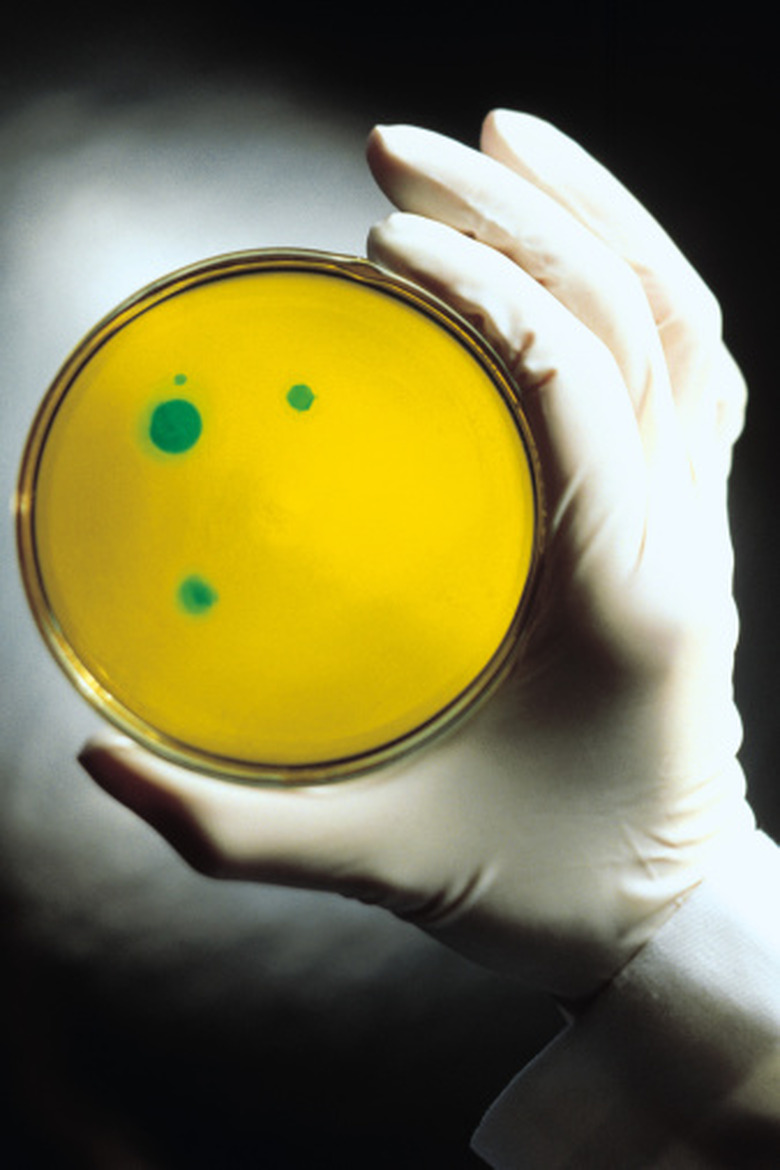Similarities Between Bacteria & Protists
Protists and bacteria belong to different domains of life, the eukaryotes and the prokaryotes, sundered by long eons of evolution. Nonetheless, like all forms of life on Earth, they share a common ancestor, and thus there are a number of intriguing similarities. Despite the incredible diversity of both protists and bacteria, you can make a few generalizations about what they share in common.
Genetic Code
Genetic Code
In protists, bacteria and all other organisms, certain sequences of chemical base pairs in DNA code for certain amino acids. The code is nearly universal, in the sense that the same sequence from the DNA will code for the same sequence of amino acids in both a protist and a bacterium. Exceptions to this universality include the fact that some bacteria use the sequence UAG to code for pyrrolysine rather than a stop codon, which is how it is used in other organisms. Nonetheless, for the most part, the code is a remarkable similarity between bacteria and protists.
Ribosomes
Ribosomes
Both bacteria and protists first transcribe sections of their DNA code into RNA, then translate this RNA into protein using complex structures called ribosomes. Again, protists and bacteria share these similarities with all other known forms of life. The structure of the ribosome differs somewhat between bacteria and eukaryotes like the protists. This difference is an important one, too, because some antibiotics kill bacteria by making use of differences between bacterial and eukaryotic ribosomes.
Cell Membranes
Cell Membranes
Both bacteria and protists have cell membranes made of chemicals called phospholipids. A phospholipid in a bacterium or a protist has a water-soluble group at one end and a water-insoluble tail at the other, so the cell membranes of bacteria and protists are constructed from a bilayer of phospholipids. The tails on both point toward the center of the bilayer. Bacteria have a cell wall in addition to their cell membrane, however, and some bacteria have both an inner and outer membrane.
Highly Conserved Processes
Highly Conserved Processes
Bacteria and protists share striking similarities in various biochemical processes that are also very similar to those in all other lifeforms. The process that bacteria and protists use to break down glucose is called glycolysis. Although there are some variations, glycolysis takes place in nearly all known organisms. Likewise, the process of DNA replication is very similar between bacteria and protists with some minor differences.
References
- "Biology"; Neil A. Campbell, et al.; 2008
Cite This Article
MLA
Brennan, John. "Similarities Between Bacteria & Protists" sciencing.com, https://www.sciencing.com/similarities-between-bacteria-protists-8613687/. 24 April 2017.
APA
Brennan, John. (2017, April 24). Similarities Between Bacteria & Protists. sciencing.com. Retrieved from https://www.sciencing.com/similarities-between-bacteria-protists-8613687/
Chicago
Brennan, John. Similarities Between Bacteria & Protists last modified March 24, 2022. https://www.sciencing.com/similarities-between-bacteria-protists-8613687/
